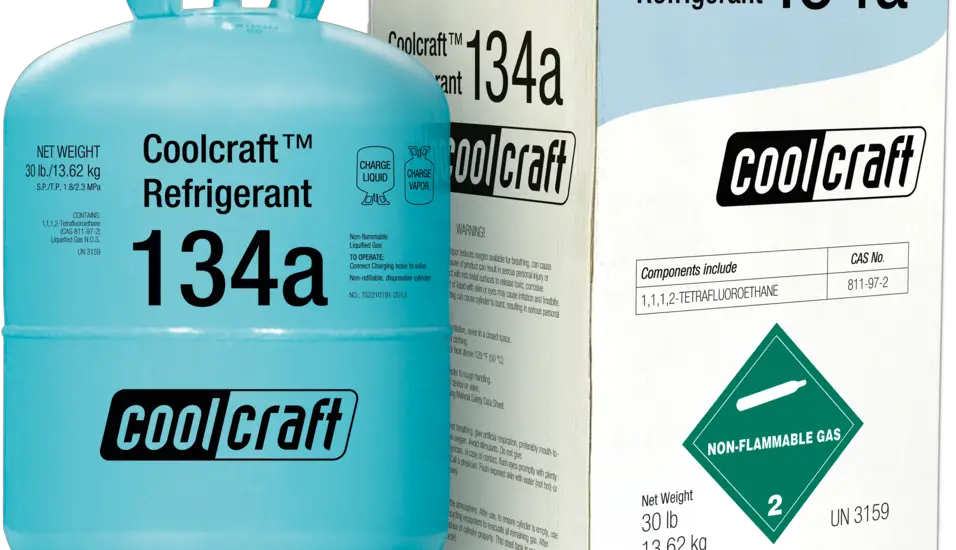Refrigerant recovery is more than just a fancy phrase thrown around in the HVAC world. It’s a vital process with wide-ranging implications, from environmental conservation to legal compliance. Intriguing, right? Let’s jump straight in and dissect this intriguing topic!

Table of Contents
Understanding Refrigerant Recovery
Definition and Importance of Recovering Refrigerant
What is Refrigerant Recovery?
So, you ask, what is this “refrigerant recovery” thing? Well, in layman’s terms, it’s the process of extracting refrigerant from cooling systems like your AC or fridge, and storing it for later reuse or disposal. As simple as it sounds, it’s a game-changer!
Why is Refrigerant Recovery Crucial?
But why should we care about recovering refrigerant? Isn’t it just another complex procedure? Well, it turns out, recovering refrigerant is key to preventing harmful refrigerants from wreaking havoc on our environment. Plus, it’s not optional – it’s law!
Legal and Environmental Aspects of Recovering Refrigerant
Regulatory Laws and Compliance
The U.S. Environmental Protection Agency (EPA) doesn’t joke with refrigerant recovery. There are strict rules and regulations in place, and any violation could earn you a hefty fine. So if you’re in the HVAC business, compliance isn’t just nice—it’s necessary.
Environmental Impact of Refrigerants
You ever consider what happens when refrigerants are not properly disposed of? Spoiler alert: it ain’t pretty. Refrigerants can deplete the ozone layer and contribute to global warming. But with proper refrigerant recovery, we can turn the tide.
Types of Refrigerant Recovery: Liquid vs. Vapor
Liquid Refrigerant Recovery
How Liquid Refrigerant Recovery Works
Liquid refrigerant recovery is like a superhero saving the day. It involves the refrigerant being recovered in its liquid state, which makes the process quicker. It’s like siphoning gas from a car, but with a refrigerant twist!
Pros and Cons of Liquid Refrigerant Recovery
But like any superhero, liquid refrigerant recovery has its strengths and weaknesses. It’s faster, but it can also be risky if not properly managed. Remember, with great power comes great responsibility!
Recovering Vapor Refrigerant
How Recovering Vapor Refrigerant Works
Vapor refrigerant recovery, on the other hand, is like a marathon runner—steady and reliable. It involves recovering refrigerant in its gaseous state. It’s a bit slower, but hey, slow and steady wins the race, right?
Pros and Cons of Recovering Vapor Refrigerant
While vapor recovery might take longer, it’s safer and less prone to complications. But like a marathon, it requires patience and time. You win some, you lose some, right?
Fastest Way to Recover Refrigerant
Preparing for Fast and Efficient Refrigerant Recovery
Necessary Equipment for Fast Refrigerant Recovery
Want to speed up your refrigerant recovery? You’re going to need the right tools. A recovery machine, a recovery tank, a manifold gauge set – just to name a few. Think of it like assembling your superhero toolkit.
Safety Considerations When Recovering Refrigerant
But remember, faster isn’t always better, especially if it’s at the expense of safety. When handling refrigerants, safety goggles, gloves, and proper ventilation are your best friends. Why risk it when you can prevent it?
For more articles on refrigerants, click here.
Speeding Up The Process of Recovering Refrigerant
Push-Pull Method: A Fast Approach for Large Systems
For large systems, the push-pull method is like the turbo-boost button on a race car. It involves pushing the liquid refrigerant out of the system and pulling the remaining vapor. It’s fast, but it also requires a skilled hand.
Direct Liquid Recovery: Speed and Efficiency for Smaller Systems
For smaller systems, direct liquid recovery is your go-to. It’s like having a shortcut in a maze – quick, efficient, and straight to the point. Just remember, it’s not suitable for all refrigerants, so be sure to check your system’s specs first.
Conclusion
Factors to Consider When Choosing a Method For Recovering Refrigerant
System Size and Configuration
When choosing a refrigerant recovery method, size does matter. Larger systems might call for the push-pull method, while smaller ones could benefit from direct liquid recovery. It’s like picking the right shoes for the right occasion.
Type of Refrigerant Used
The type of refrigerant used also plays a crucial role. Some methods might not be compatible with certain refrigerants. Like how you wouldn’t put diesel in a petrol car, right?
Recovery Speed and Efficiency Needs
And let’s not forget about speed and efficiency. If you need to recover refrigerant quickly, you might opt for a faster method, but if safety and reliability are your top priorities, a slower method could be your best bet. It’s all about balance, folks.
Final Thoughts on Optimizing Recovery
Importance of Training and Knowledge in Recovery
Bottom line? Recovering refrigerant is not a guessing game. It requires proper training and knowledge. After all, you wouldn’t want a novice performing surgery on you, would you?
Future Trends in Refrigerant Recovery
And as we look towards the future, recovering refrigerant is set to become even more important. With new laws, technologies, and refrigerants on the horizon, staying informed is key. Because in the world of refrigerant recovery, the only constant is change.